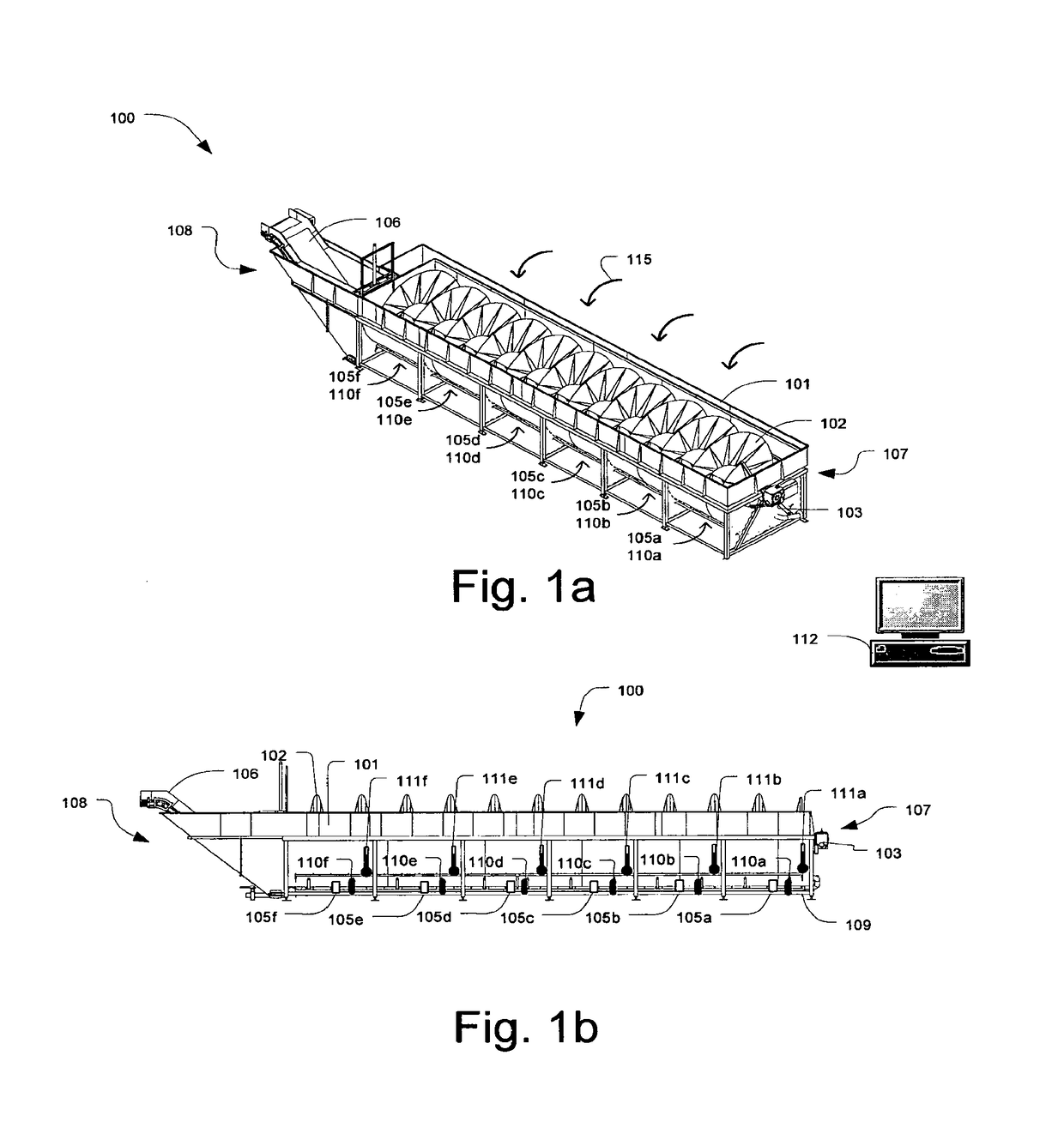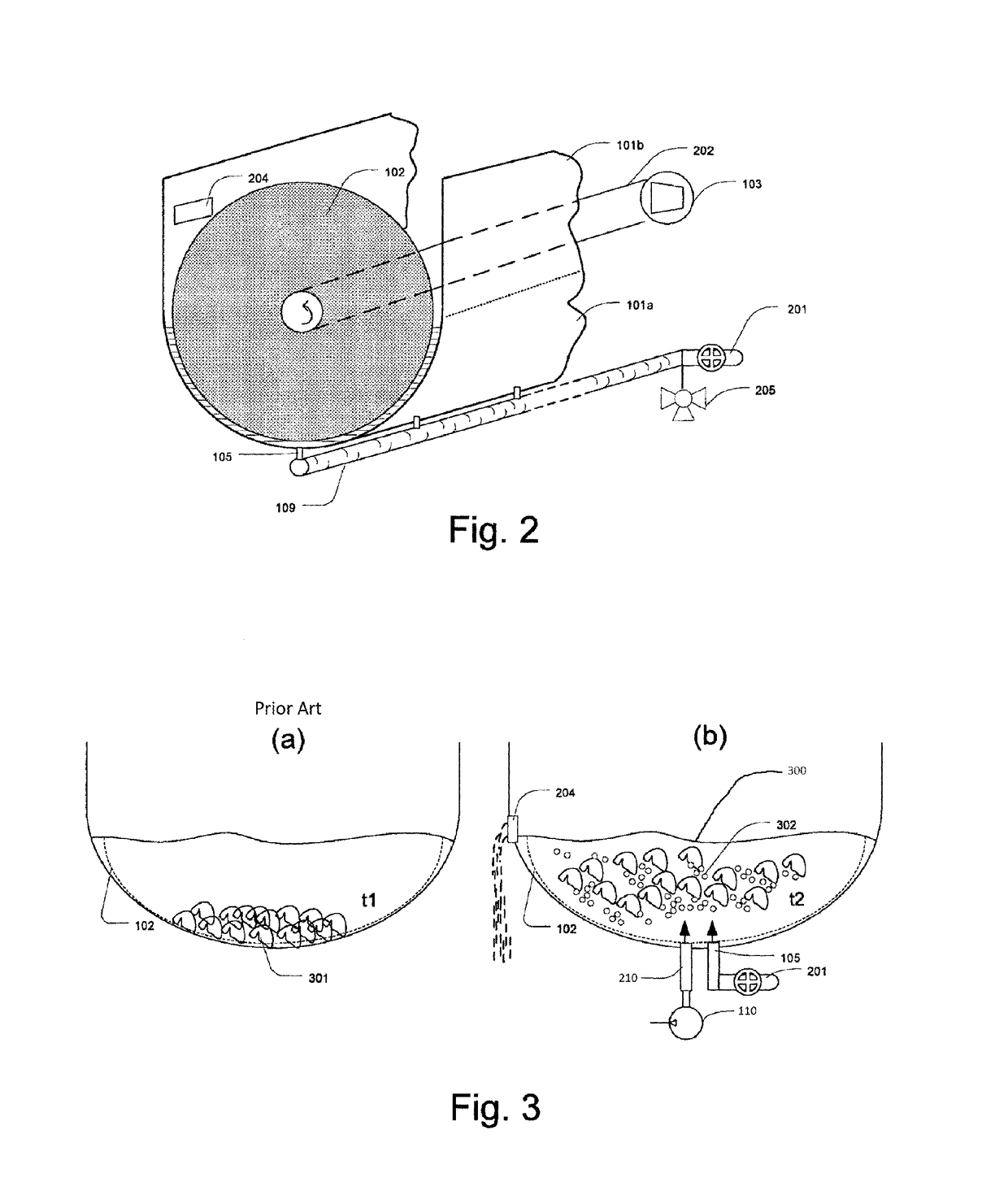Apparatus for thawing or cooling food products
a technology of food products and apparatus, which is applied in the field of apparatus and a method for thawing or cooling food products, can solve the problems of difficult or even impossible to ensure the optimal temperature distribution of the tank, large ice/fish clusters can easily be formed somewhere in the tank, and the process is typically taken several hours, so as to facilitate the plucking of chicken and prevent the formation of bacteria within the liquid, the effect of preserving the quality of fish mea
- Summary
- Abstract
- Description
- Claims
- Application Information
AI Technical Summary
Benefits of technology
Problems solved by technology
Method used
Image
Examples
Embodiment Construction
[0038]FIGS. 1a,b show a perspective view (FIG. 1a) and a side view (FIG. 1b) of one embodiment of thawing or cooling apparatus 100 according to the present invention for thawing or cooling food products. The food products may be any type of a food product, such as meet, poultry items and fish. If the food products are frozen fish products, e.g. ground fish, mackerel or shellfish, they are often in a form of frozen blocks where many of the fish products are frozen together or together with a liquid such as water. The blocks can e.g. weight from 5 kg to 30 kg and therefore the thawing process includes thawing the blocks in addition to thawing the individual fish products.
[0039]The apparatus 100 comprises a tank 101, a spiral shaped blade 102 (auger) mounted to and operated by a rotation axis (auger shaft) via rotation motor 103 and a temperature controlling system 105a-105f. The tank 101 is preferably made of a stainless steel and is adapted to be at least partly filled with a liquid,...
PUM
 Login to View More
Login to View More Abstract
Description
Claims
Application Information
 Login to View More
Login to View More - R&D
- Intellectual Property
- Life Sciences
- Materials
- Tech Scout
- Unparalleled Data Quality
- Higher Quality Content
- 60% Fewer Hallucinations
Browse by: Latest US Patents, China's latest patents, Technical Efficacy Thesaurus, Application Domain, Technology Topic, Popular Technical Reports.
© 2025 PatSnap. All rights reserved.Legal|Privacy policy|Modern Slavery Act Transparency Statement|Sitemap|About US| Contact US: help@patsnap.com



